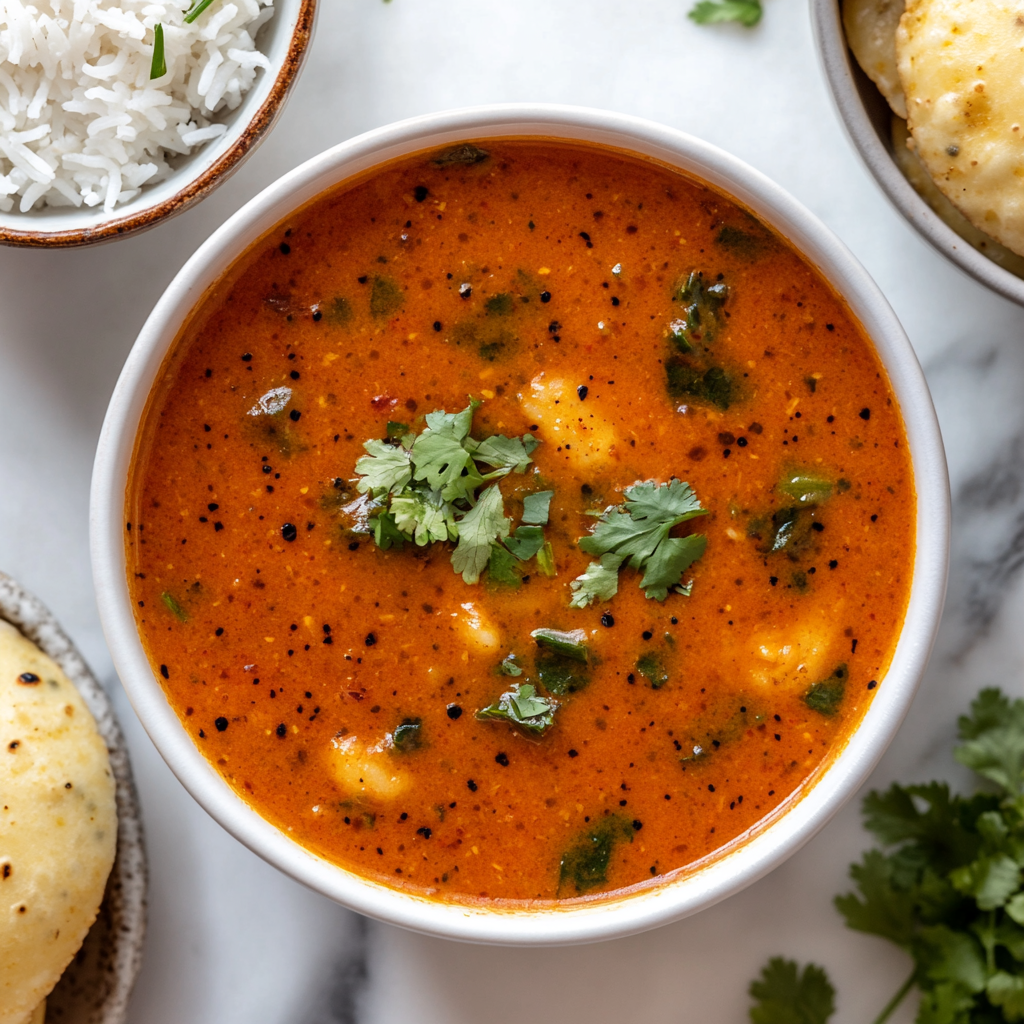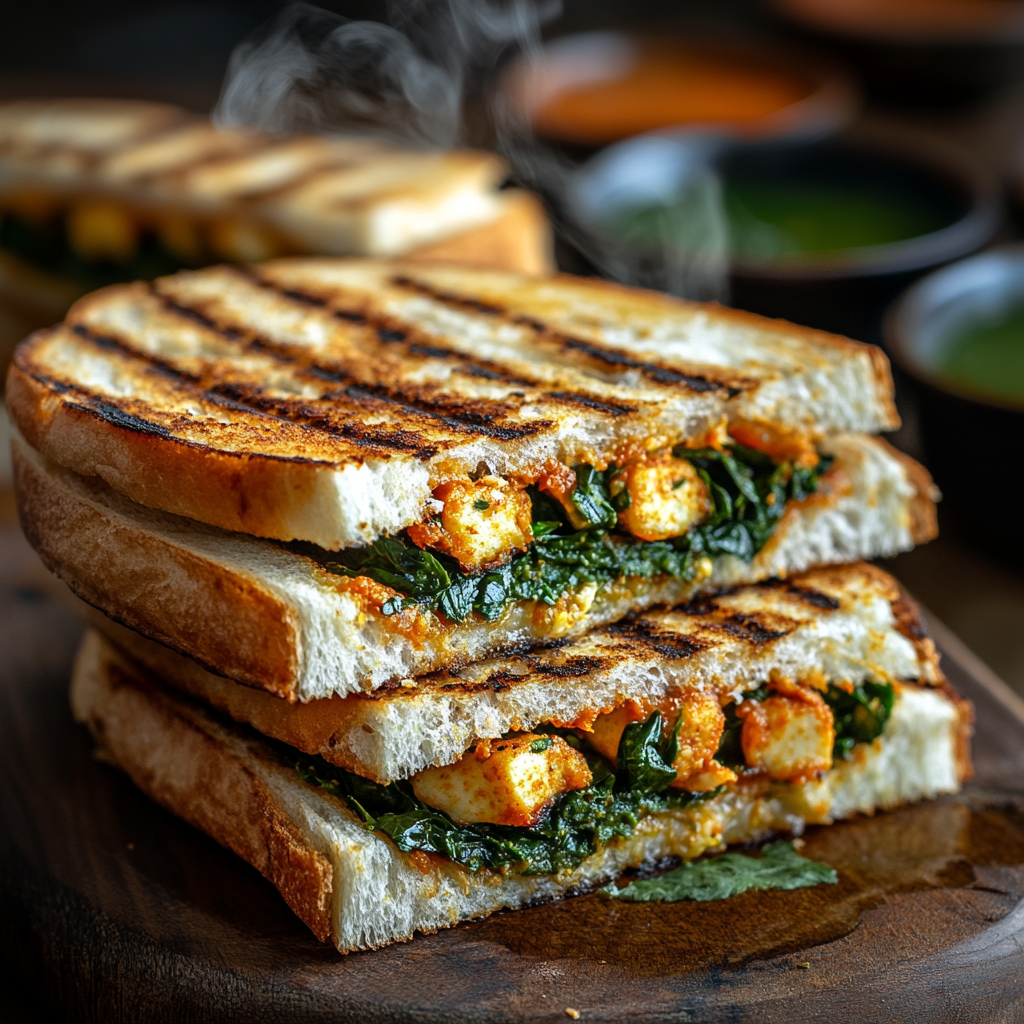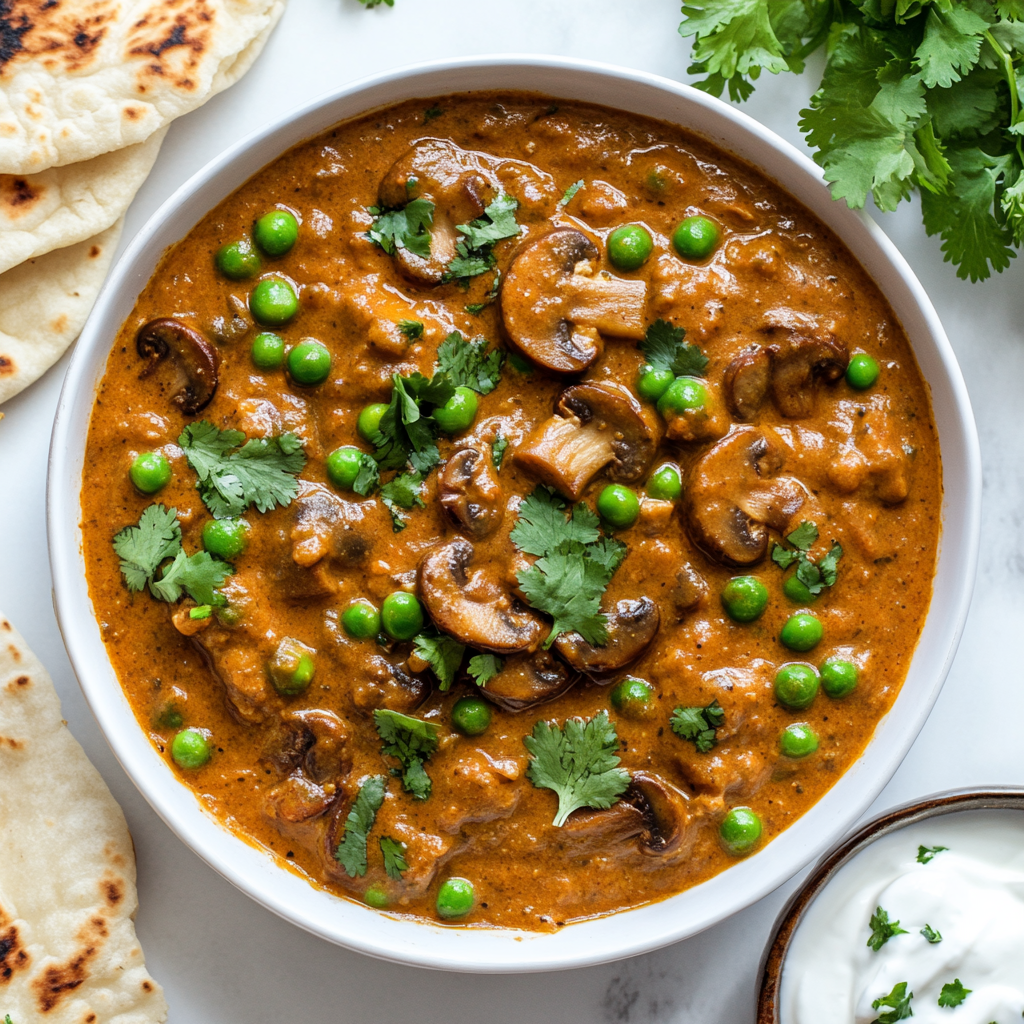Vegetable Sambar is a flavorful and aromatic South Indian stew made with lentils and vegetables, simmered in a tangy tamarind broth. Infused with a blend of spices and sambar powder, it is a staple dish that pairs perfectly with rice, idli, or dosa. Nutritious and rich in fiber, it is a wholesome meal enjoyed by all ages across South India, providing a balance of protein, vegetables, and aromatic spices.
Health Benefits:
- Rich in Fiber: Sambar contains fiber-rich vegetables and lentils, which promote digestive health.
- High in Protein: Toor dal provides a good amount of plant-based protein, making it a nutritious choice for vegetarians.
- Low in Calories: Despite being rich in flavor, sambar is low in calories and fat, making it a light yet filling meal.
- Anti-inflammatory: Turmeric and asafoetida used in sambar have anti-inflammatory and digestive benefits.
Nutritional Highlights:
- Rich in Fiber (from vegetables and lentils)
- High in Protein (from toor dal)
- Packed with Vitamins and Minerals (from the variety of vegetables)
- Low in Fat
- Gluten-Free
Nutritional Information (Per Serving):
- Calories: 180
- Protein: 6g
- Fat: 6g
- Carbohydrates: 28g
- Fiber: 6g
- Iron: 10% of daily value
- Calcium: 5% of daily value
Ingredients:
For the Sambar:
- Toor Dal (Pigeon Peas): 1/2 cup
- Water: 3 cups (for cooking dal)
- Turmeric Powder: 1/4 tsp
- Tamarind Pulp: 2 tbsp (soaked in 1/4 cup warm water)
- Sambar Powder: 1 ½ tbsp
- Salt: To taste
Vegetables (Adjust quantity as per preference):
- Drumsticks: 2, cut into 2-inch pieces
- Carrot: 1 large, sliced
- Brinjal (Eggplant): 1 small, diced
- Potato: 1 medium, peeled and diced
- Onion: 1 medium, chopped
- Tomato: 1 medium, chopped
- Okra (Bhindi): 4-5, cut into pieces
For Tempering (Tadka):
- Oil (preferably coconut or sesame): 2 tbsp
- Mustard Seeds: 1 tsp
- Cumin Seeds: 1/2 tsp
- Asafoetida (Hing): A pinch
- Dried Red Chilies: 2
- Curry Leaves: 10-12 leaves
- Fenugreek Seeds (Methi): 1/4 tsp (optional)
Garnish:
- Fresh Coriander Leaves: 2 tbsp, chopped
Recipe Instructions:
- Cook the Toor Dal
Rinse the toor dal thoroughly and pressure cook it with 2 ½ cups of water and turmeric for 3-4 whistles (or about 10-12 minutes). Once done, mash the dal well and set it aside.
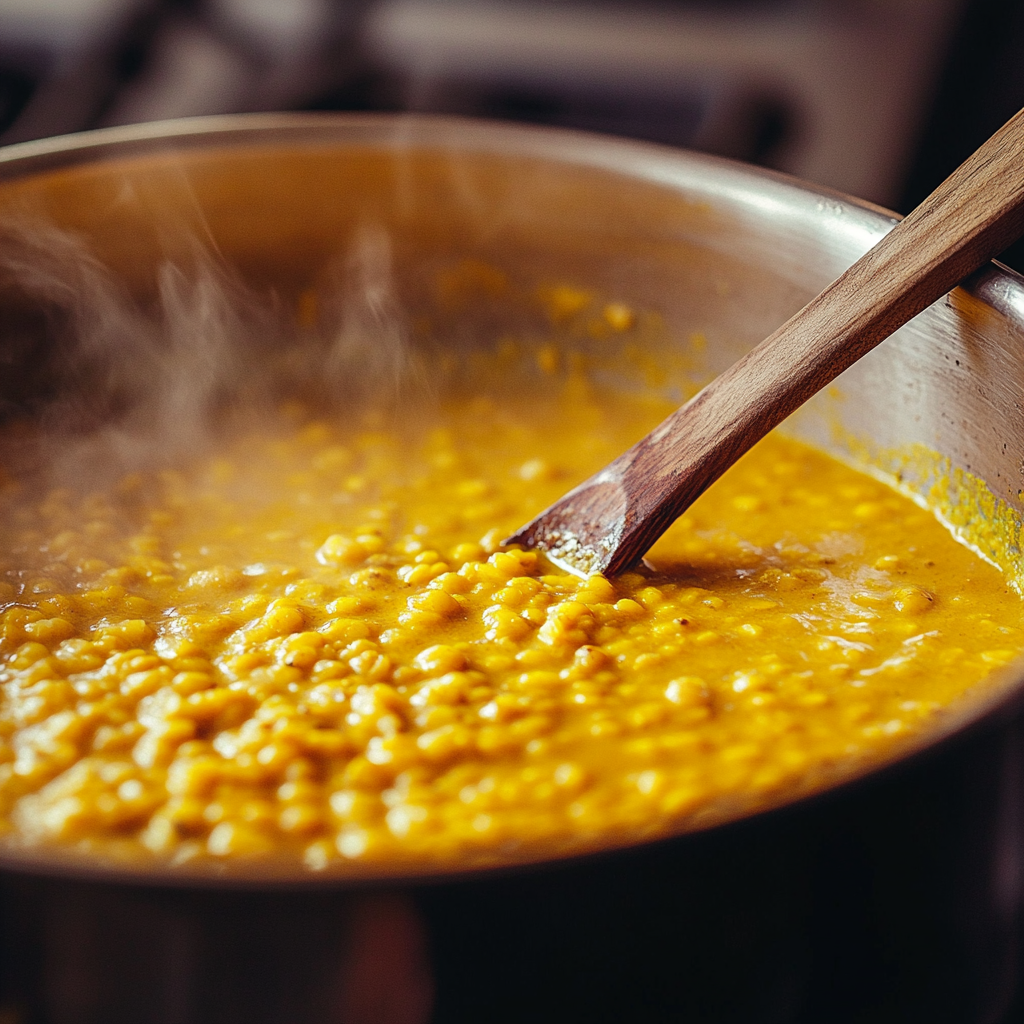
2. Prepare the Tamarind Pulp
Soak 2 tbsp of tamarind in 1/4 cup warm water for 15 minutes. Squeeze out the tamarind pulp and strain it to remove seeds and fibers. Set aside.

3. Cook the Vegetables
In a large pot, add 2 cups of water and bring it to a boil. Add the chopped vegetables (carrots, drumsticks, potatoes, brinjal, onions, and tomatoes) along with some salt. Cover and cook until the vegetables are tender but not mushy, around 10-12 minutes.
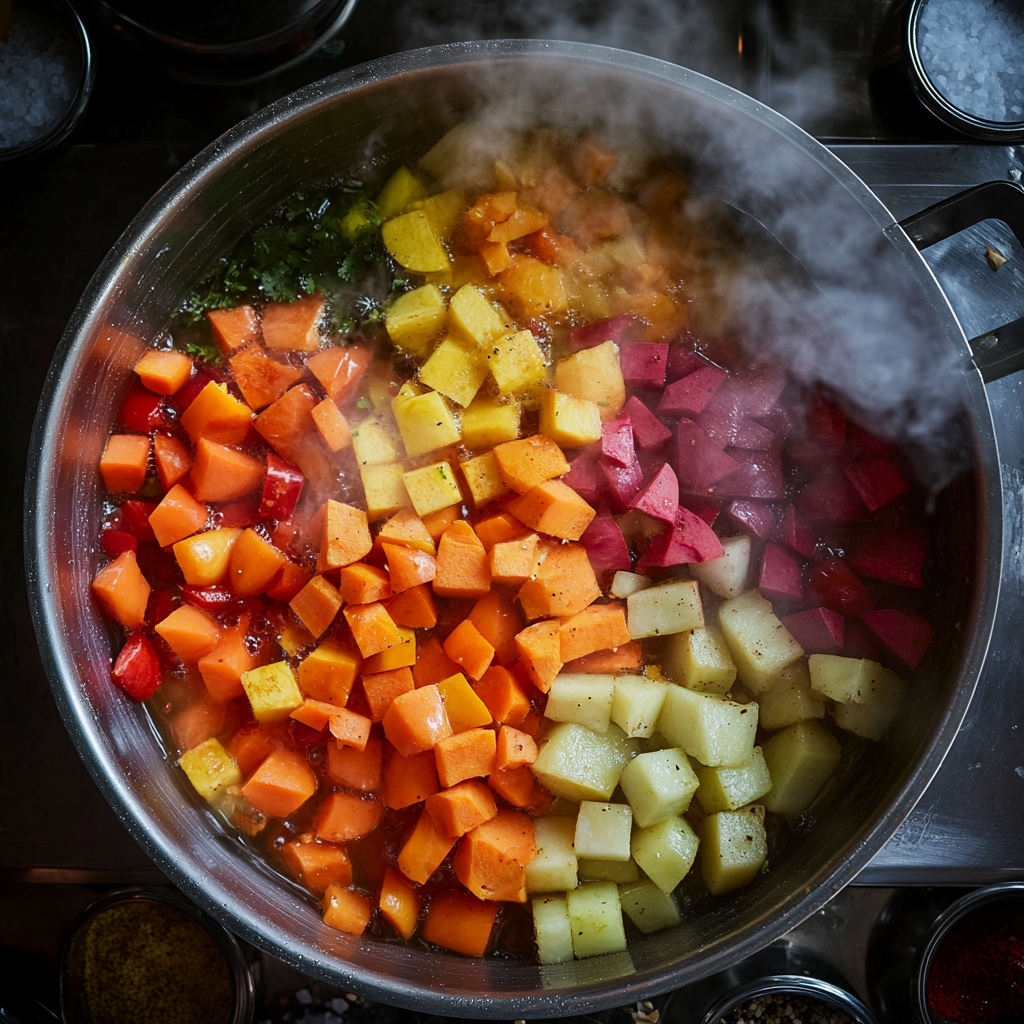
4. Mix the Sambar Base
Add the cooked toor dal, tamarind pulp, and sambar powder to the pot of cooked vegetables. Mix well and bring it to a simmer. Add water to adjust the consistency as needed. Let the sambar simmer for 10-15 minutes, allowing all the flavors to blend.
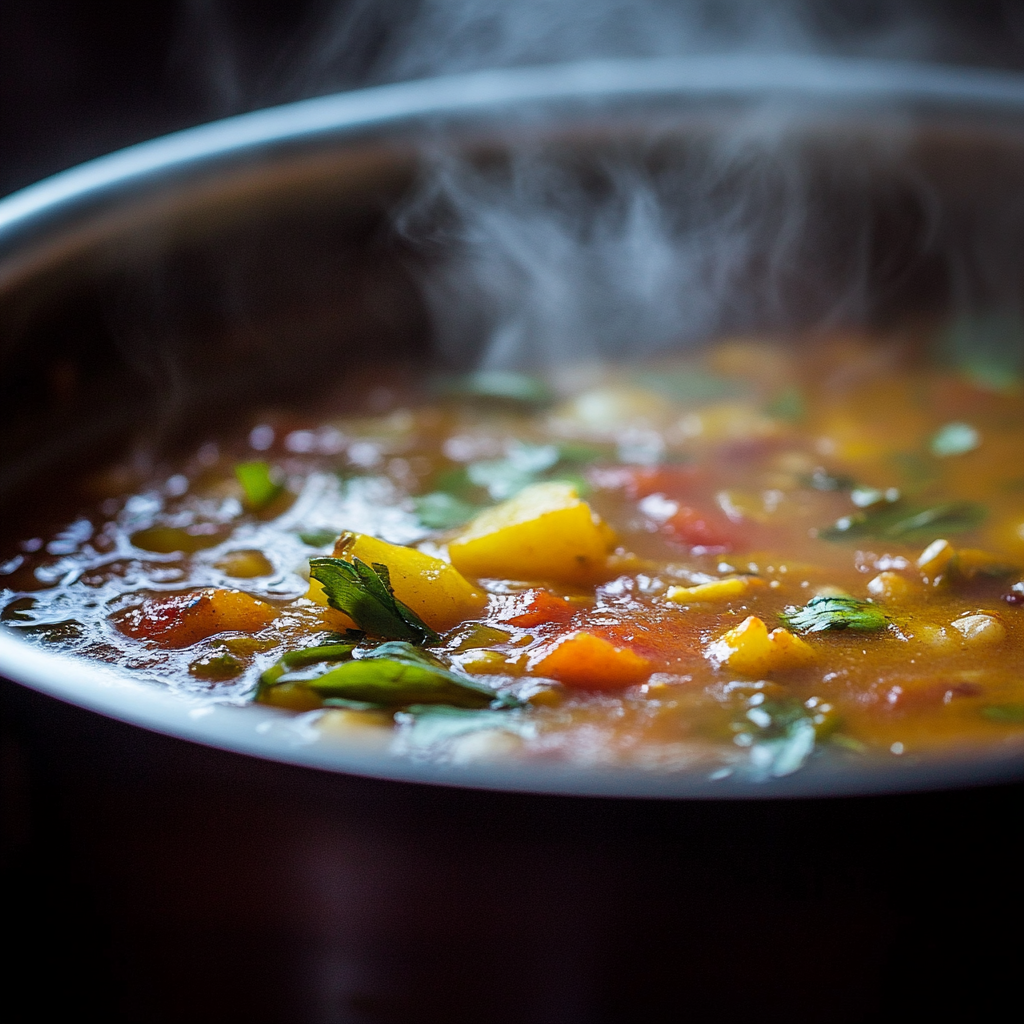
5. Prepare the Tempering (Tadka)
In a small pan, heat 2 tbsp oil. Add mustard seeds and cumin seeds. Once they start spluttering, add dried red chilies, curry leaves, and a pinch of asafoetida (hing). Pour this tempering over the simmering sambar and mix well.

6. Garnish and Serve
Turn off the heat and garnish with fresh coriander leaves. Serve hot with idli, dosa, or rice.
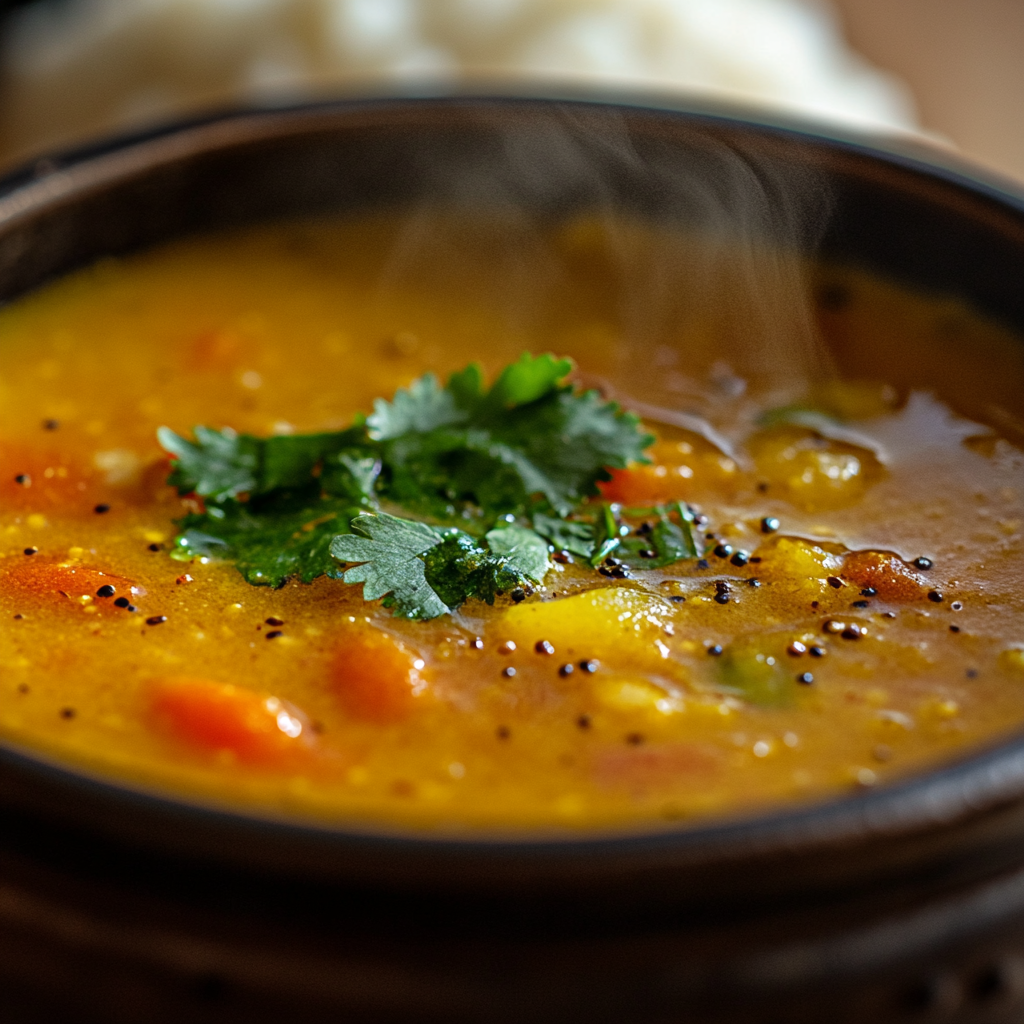
Tips and Tricks:
- Sambar Powder: Homemade sambar powder adds an authentic taste, but store-bought works well too. You can adjust the amount of sambar powder according to your spice preference.
- Tamarind: The tamarind pulp adds tanginess to the sambar. If tamarind is unavailable, lemon juice can be a substitute, but it’s best to stick to tamarind for an authentic flavor.
- Consistency: The sambar should not be too thick or too runny. Adjust the water depending on whether you’re serving it with rice or as a side to idli/dosa.
- Use Fresh Vegetables: Drumsticks, brinjal, and carrots give sambar its authentic taste and texture. Feel free to vary the vegetables based on availability.
